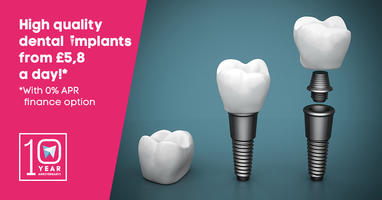Dental implants are dental prostheses that replace every part of a tooth, both the visible portion (the crown), and the invisible parts (the tooth roots, which are replaced by the dental implant itself). Depending on which tooth will be replaced, how many teeth will be replaced, and which teeth are being replaced, the patient has a choice from many different types of dental implants. Some are wider, and some are thinner, some have a specific shape, some have a special surface that is treated to encourage bone growth, some need healing abutments and some don’t. I intend to give a quick overview of what kind of dental implants exist and when we use them.

Size and shape
The easiest way to understand dental implants is to think of them as tooth roots. If you look into your mouth, you can see that each tooth is shaped differently and they are not the same size either. Their roots are also different in size and shape depending on the rest of the tooth, so different sizes and shapes of dental implants are used to replace different tooth roots. Smaller, front teeth are usually replaced with smaller dental implants, while molars require larger ones, or even multiple smaller ones, depending on the size of the molars. This is one of the reasons why dental x-rays are so important to dental implantation; it gives the dentist a visual on how big your tooth root is.
Surface
There are many different kinds of surfaces (acid etched, unetched, restorative, porous, etc.). All of them are meant to facilitate bone growth. The bone tissues of the jaw do not just grow around the dental implant; the bones integrate the dental implant by growing in, around and through the dental implant itself. Porous surfaces are preferred, as the bone tissue has an easier time integrating this into itself.
One step and two step dental implants
There are two ways to place dental implants into the jaw: one is to completely cover it with gum tissue, and at a later date open the gum and place a healing abutment on the dental implant, and the second is to place the dental implant into the gums with the head sticking out a bit, leaving the abutment exposed. Both have their advantages and are used at different times. The first version, covering the dental implant completely with gum tissue will take a longer time, but it is safer, as none of the wound or the dental implant is exposed to the bacteria in the mouth. The second is quicker but can only be done if the patient’s mouth is otherwise completely clean. The dentist will make that judgement on an individual basis.
Image: 1.

